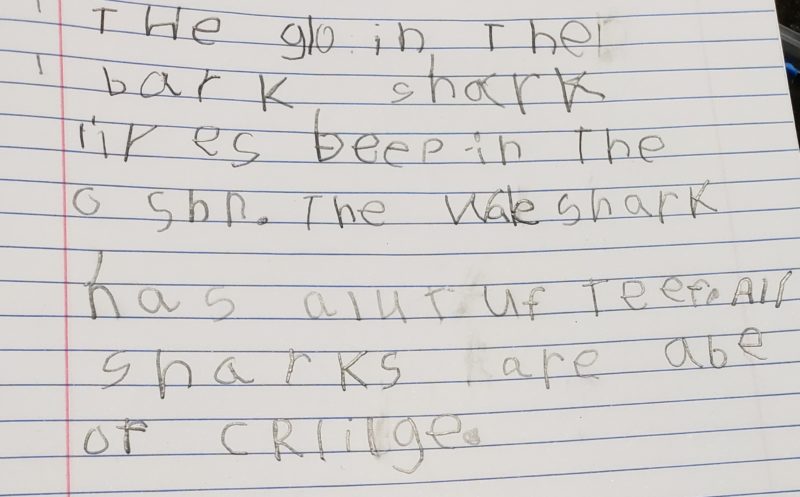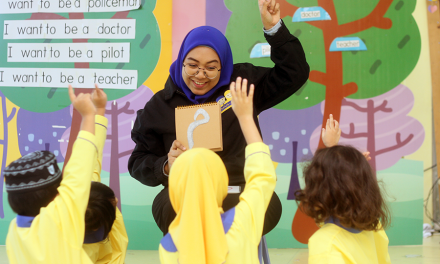Your child is already in primary school but you notice that he seems to have difficulties when it comes to writing. His handwriting isn’t just messy, but his spelling is fairly poor for the simplest of words and his spacing is also odd – the letters and numbers are all over the place. The thing is, you know he doesn’t put minimal effort in it. He works hard but writing just looks.. so tough for him. Chances are, your child might have a learning difficulty known as DYSGRAPHIA.
Dysgraphia is a learning disability that affects specifically writing, typing and spelling abilities.
A child with this condition usually have problems in three main areas namely visual-spatial, fine motor skills and language processing. Nevertheless, similar to dyslexia, dysgraphia does not have any correlation with intelligence. A dysgraphic child can be very smart but have difficulties in conveying his idea through writing.
To understand dysgraphia better, let’s take a closer looks at the symptoms each problem may exhibit, how it can affect the children and how we can help them as parents and teachers.
Visual-spatial
- Inability to understand spacing – they find it hard to write in a straight line.
- Inconsistent letter formation – letters are not in uniformed size, there are also mixing of capital and small letters in spellings.
- Difficulty to copy visual information accurately causing their writing to look very sloppy and illegible in some cases.
Fine motor skills

Awkward pencil gripping is normal for children below three, but if this persists until they are five years old, you might want to get it checked.
- Poor fine motor skills and low dexterity making it a struggle to grip pencils or other writing tools properly. You may also see them hold the paper with one hand to secure its position while trying to write with the other hand.
- Sometimes they would also have trouble with maintaining the correct posture and arm position for writing, causing them to have a slow and laboured writing.
- Fatigue – because writing takes so much effort and is a painstakingly slow process for them, many dysgraphic students get tired with writing and ended up not finishing their tasks.
Language processing

You can see some constant misspellings and incomplete letters. Child is also unable to differentiate the letter ‘b’ and ‘d’ properly. Source: EduBlox Online Tutor.
- Poor phonological awareness – they find it hard to manipulate speech sounds (i.e. phonemes) and translate it into letters (i.e. grapheme). It is also difficult to produce letters/numbers straight from memories without copying. In fact, a constant misspelling is a hallmark feature of dysgraphia. This can be a problem for languages like English where the spelling doesn’t necessarily reflect that sound of the letters.
- Trouble in organising thoughts when writing, leading to run-on sentences, incorrect punctuation and many letters left incomplete. It is also hard for them to self-check their works because they are so disorganised.
Up to 20 per cent of students in schools are estimated to have struggled with some sort of writing difficulties (Reynolds, 2007) but often, dysgraphic cases receive little attention because not many research had been conducted on it and people are not aware of the symptoms. Unknowingly, this can be harmful to the students because parents and teachers may think that the students are just being lazy or not putting enough effort because they are unable to finish their notes and homework.
This said, apart from giving them extra attention, we should try to accommodate their needs, and here are how we can do so:
Send them to an occupational therapist or schools that cater to students with a learning difficulty
Through occupational therapy, a child can develop his dexterity and fine motor skills through different exercises created especially for him. There are also some schools like Nexus International School and Nilai International School that are well-known for their special needs classes.
Talk to the teacher
It is very important for parents to sit down and discuss the child’s condition with his teacher so the teacher can try to modify the lesson plan to suit the child’s need. Students with dysgraphia generally need extended time for writing exercises, there are also some writing tools and teaching aid that can be used to improve the child’s writing ability.
Think outside the box – manipulate their other sensories!
To help dysgraphic children with writing, use paper with a raised line so they can feel when they are not on the line. You can also help them to ‘feel’ the letter by tracing letters on their palms or create the letters using clay. By doing this, you are letting them feel the sensation rather than focusing on the visual part. Otherwise, you can also manipulate their speaking abilities. You can expose them to speech-to-text software where they can speak then their processor will translate their spoken words into text. If possible, encourage them to practice speaking first so they don’t get too stressed about penning their thoughts down on paper.
Teach them cursive letterings

Print letters are a bit harder for dysgraphic children to master because it requires them to write, pick up the tip and restart again when they want to move to another letter. Cursive letterings allow the tip of the pencil to stay longer on the page, hence requiring less labour. You can find some useful resources from Learning Without Tears.
Use graphic organisers and papers with large lines
One of the biggest problems that dysgraphic students face is to organise their thought visually – in an orderly manner. Graphic organiser helps to fix this problem by breaking the task into a smaller chunk of tasks. Large line also makes it easier for children with poor fine motor skills to adjust their grip.
To get a perspective on how dysgraphia can be hard for those who suffer from it, try writing with your non-dominant hand. You may find it very difficult to write in a neat and speedy manner like you usually do with your dominant hand – and that’s not even the hardest part of being dysgraphic. You still have the ability to differentiate the letters and could organise your thoughts and translate them into writing – this is not the case with students with dysgraphia. With therapy, technology and time, they can certainly improve but we also need to give them support and be more understanding of their situation.
Editor’s note: If you have a suspicion that your little ones might have some kind of learning difficulty, don’t be afraid of getting help. Maybe you can book a screening session with an occupational therapist at We Rock The Spectrum Kids’ Gym just to give you an ease of mind. It’s better to treat it sooner than later.









